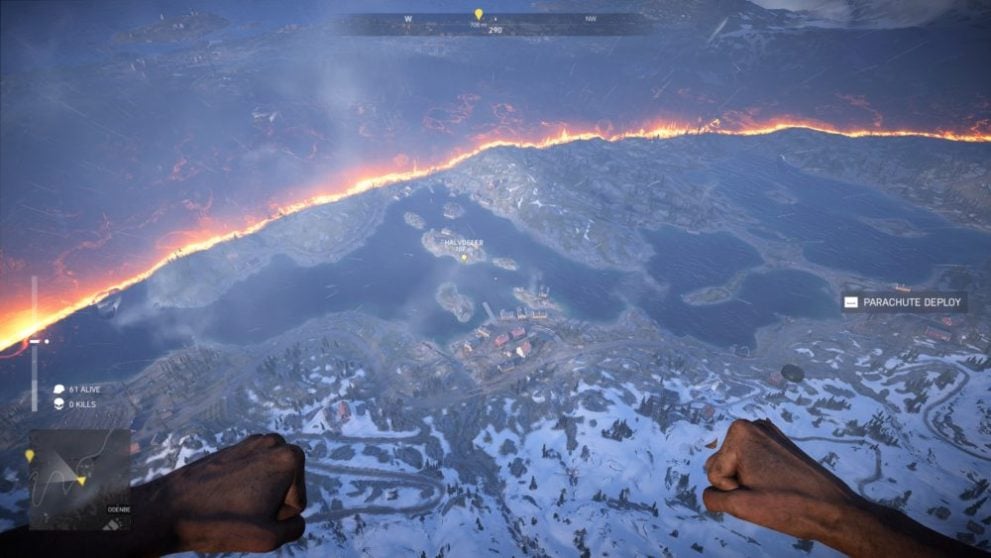Battlefield V players have been waiting quite some time for the game’s battle royale experience, and six months after its launch, Firestorm is finally here. The good news is that having played the mode extensively at an event last week, I can say with confidence that it’s shaping up as something worth the wait.
This is absolutely a polished, AAA battle royale experience that is superb to play. It feels familiar, of course, as all games in this hot-trend genre do, but Firestorm sets itself apart from the crowd by introducing some novel innovations that make it feel like a distinctly Battlefield version of battle royale.
This was one of my key concerns going into Firestorm because I think in a genre as crowded as battle royale it’s no longer enough to just offer a last-man-standing mode to players — even if you’re trying to appeal to the current Battlefield V audience first and foremost.
And with so much time invested in Firestorm’s development, merely pasting that same loop into a large Battlefield map wouldn’t have represented a success. Particularly when PUBG is already offering a tactical, military-sim battle royale experience.
Thankfully, though, while Firestorm doesn’t take any major risks, it does tweak the blueprint and introduces enough new features to make it attractive both to hardcore Battlefield players and a new audience of players, all while respecting the tropes of the franchise.
So what is actually doing that’s worth your attention? Well, for starters, there’s a fully destructible environment, just as you’d expect to see in a conventional Battlefield multiplayer mode. But while it’s been a mainstay in the series for years, it’s a first for mainstream battle royale games.
And boy does it completely change the experience. Buildings wither under machine gun fire, bazookas can punch holes in walls, and tanks can blow entire buildings to smithereens or crumble them under track.
It’s something you really have to consider in a tactical sense, as there’s really no way squads can camp in buildings once discovered in Firestorm. And the ability to level infrastructure can really swing the balance of power on the battlefield.
An incoming tank, for example, might force a swift exit from a squad camped in an urban vantage point, but if they’ve remembered to plant an anti-tank mine on the bridge leading up to it then the aggressors might find their armored vehicle has suddenly become a deathtrap, and their entire strategy suddenly out the window.

Several other features in Firestorm cater to this tactical element of the experience and further tie it to conventional Battlefield gameplay. This includes the map’s objectives, which are capture points that are placed in the map’s named locations at random each match.
Making the decision to capture them rewards with some of the best loot, items, and vehicle resupplies in the game. But doing so highlights your position to entire map. It’s a risk/reward system that makes taking an objective a tense affair and obviously requires careful consideration.
Unlocking the game’s best vehicles works similarly. Vehicle lockups house tanks and half-tracks at random. These armored machines are the game’s most potent of its 17 vehicles, but getting inside a lockup requires the coordination of the squad to open, and doing so also flags your position to enemies.
Rampaging around in a vehicle feels just as good as it has always done in a Battlefield game, especially with your entire team manning each position.
I imagine that having a squad well-drilled in tank gameplay would be a huge advantage when playing the game competitively. The sheer number of vehicles and their destructive potential adds a new layer to the battle royale experience that we’ve not seen in other games.
But Firestorm balances its heavy vehicles nicely from what I’ve played. I didn’t find the tanks overpowered, as I thought I might. Apart from attracting a huge amount of attention, running a tank requires fuel, so there’s a time limit on how long you can spend inside.
What’s more, crew members that are downed while inside a vehicle can’t be revived as they can when on foot, so there’s always the risk of being instantly killed when using them.
For me, it is in these moments of strategic squad play that Firestorm is at its most exciting. I much preferred it to playing solo, where I wasn’t as compelled to maraude around in vehicles or engage with objectives.
So much of what is good about Firestorm is in the coordination with other players, and it just didn’t feel as exciting or even as efficient to do on my own.
Ultimately, solo felt much more like “just another” battle royale game, rather than anything particularly new and exciting. A polished and very good one, to be sure, but when you’re not making an effort to play with vehicles and features Firestorm has, it won’t feel like anything you’ve not experienced before.
Perhaps the addition of classes would change that? Because they’re absent in Firestorm, with your selection only affecting character appearance rather than abilities or weapons. I was told this was to “honor the level playing field of battle royale.”
But while I agree that giving players the option to use every weapon in the game is a smart one, I can’t help but feel giving different classes special abilities would add something to gameplay, and could possibly give that lift to solo play to make it more interesting.
We’ve seen abilities implemented successfully in Apex Legends, and I think Firestorm could benefit from it. But what’s exciting is that Firestorm’s launch is just the beginning.
Speaking with the game’s producer, Arthur Rohart, I was told that features like vehicle customization, progression, and even class play may be added down the track. So if what we have now is just the foundation, I’m confident Firestorm and Battlefield V has a bright future.
